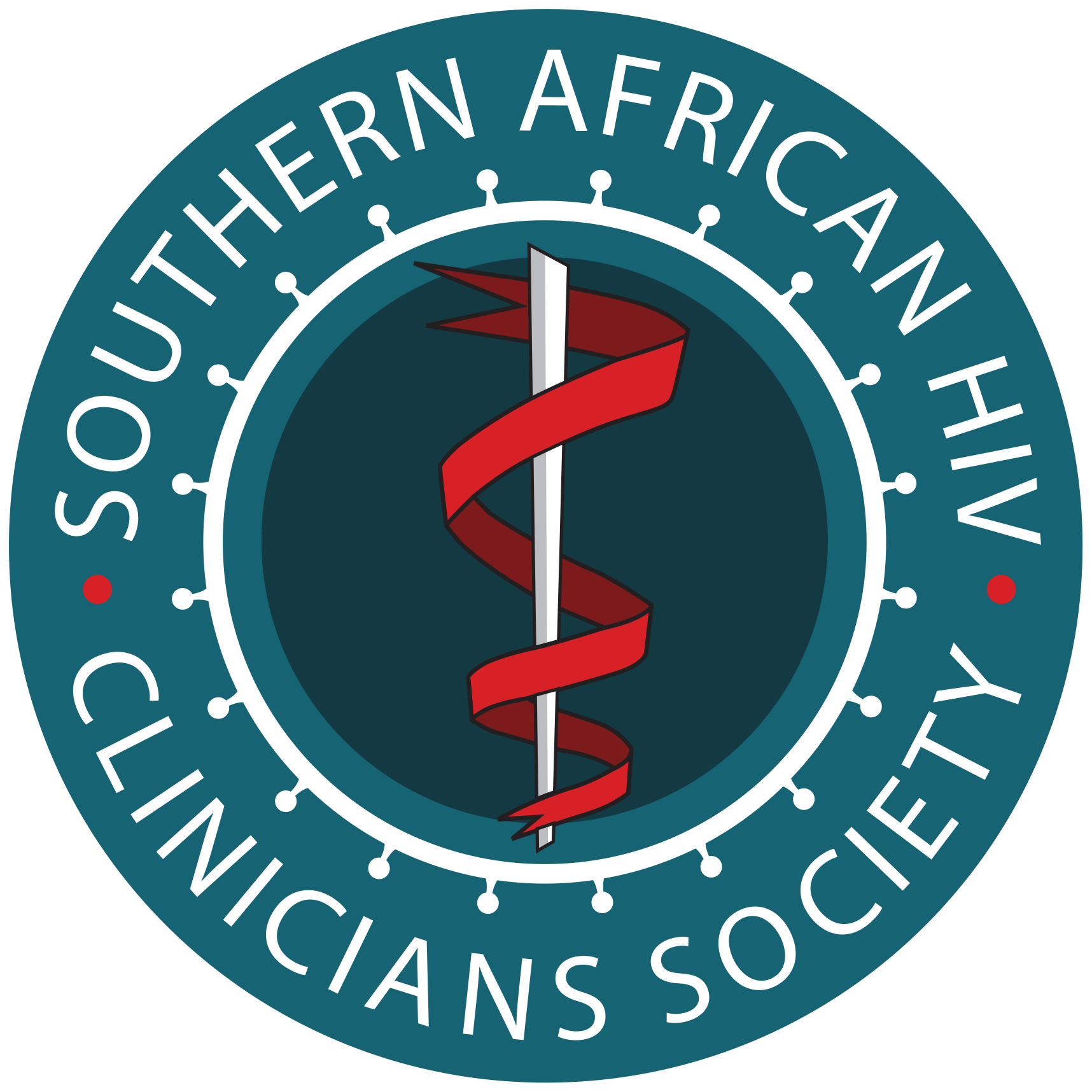ART Guidelines
References

 Key points
Key points - There is no single blood test for accurate quantification of liver impairment.
- Child-Pugh class C liver disease may require dose adjustment for some ART drugs
- ATV can cause jaundice due to elevation of unconjugated bilirubin (indirect) which is benign.
- The combination of TDF (or TAF) + 3TC (or FTC) + DTG is regarded as least hepatotoxic.
Table 22 outlines dose adjustments for the relevant ART drugs in patients with Child-Pugh class C liver impairment 1.
| TABLE 22: Prescribing antiretroviral therapy in liver impairment. | |||
| Class | Drug | Prescribing notes | |
|---|---|---|---|
| NRTI | TDF | No dose adjustment necessary. | |
| 3TC | No dose adjustment necessary. | ||
| FTC | No dose adjustment necessary. | ||
| AZT | Decrease dose by 50% or double dosage interval in significant liver disease. | ||
| ABC |
Reduce adult dose to 200 mg twice daily in significant liver disease. Contraindicated in severe liver disease. |
||
| InSTI | DTG | No data on recommendation for those with severe liver disease (Child-Pugh class C). | |
| RAL | No dose adjustment necessary. | ||
| PI | DRV | Use with caution or avoid in significant liver disease. | |
| ATV | Avoid in severe liver disease. | ||
| LPV/r | LPV is highly metabolised in the liver and concentrations may be increased in patients with hepatic impairment. Therapeutic drug monitoring should be done if available. | ||
| NNRTI | EFV | Not recommended in severe liver disease. | |
| ETR | Use with caution in severe liver disease. | ||
| RPV | Use with caution in severe liver disease (Child-Pugh class C) – dose recommendation not established. | ||
| CCR5 blocker | MVC | Concentrations likely to be increased with liver impairment. | |
| 3TC, lamivudine; ABC, abacavir; ATV, atazanavir; ARVs, antiretrovirals; AZT, zidovudine; CCR5, C-C chemokine receptor type 5; DTG, dolutegravir; DRV, darunavir; EFV, efavirenz; ETR, etravirine; FTC, emtricitabine; InSTI, integrase strand transfer inhibitor; LPV, lopinavir; LPV/r, lopinavir/ ritonavir; MVC, maraviroc; NNRTI, non-nucleoside reverse transcriptase inhibitors; NRTI, nucleoside reverse transcriptase inhibitors; PI, protease inhibitor; RAL, raltegravir; RPV, rilpivirine; TDF, tenofovir disoproxil fumarate. | |||
1 The Child-Pugh score consists of five clinical features and is used to assess the prognosis of chronic liver disease and cirrhosis. Five factors (total bilirubin level, serum albumin, and international normalized ratio, or INR, degree of ascites and hepatic encephalopathy) are graded into a composite score and divided into 3 classes. Class C represents a score of 10-15 and is associated with a 45% one-year survival (https://www.ncbi.nlm.nih.gov/books/NBK542308/)
Concomitant hepatitis B and HIV
 Key points
Key points - All patients with HIV should be screened for active hepatitis B virus (HBV) – hepatitis B surface antigen (HBsAg) screening is an appropriate test.
- The HBV VL correlates with disease progression and is used to monitor anti-HBV therapy
- All children and adults eligible for HBV vaccination should be vaccinated.
- ART drugs with anti-HBV activity are TDF (or TAF) + 3TC (or FTC).
- For all HIV-positive HBsAg-positive patients, the ART regimen should include TDF (or TAF) + 3TC (or FTC).
- Using 3TC without TDF to treat concomitant HBV/HIV leads to HBV resistance in most patients.
- Interruption of TDF (or TAF) and/or 3TC (or FTC) has been associated with flares of life-threatening hepatitis in patients with hepatitis B.
- For patients with chronic HBV infection and chronic kidney disease, options include TAF (down to eGFR of 15 ml/min/1.73m2 or for those on intermittent haemodialysis) and/or adjustment of the dosing frequency of TDF. If renal function is severe or deteriorates with TDF (or TAF), then 3TC monotherapy or other drugs with anti-HBV activity should be considered.
Hepatitis B virus (HBV) is a common concomitant infection with HIV in Southern Africa, with significant implications for progression to cirrhosis, as well as for treatment options. Access to vaccination, laboratory resources and treatment options are to some extent limited in Southern African countries, and each recommendation below should each be considered in the light of its local context.
Concomitant HBV/HIV is associated with
- an increased risk of chronic liver disease
- a higher HBV VL
- an increased risk of drug-induced hepatotoxicity
- a flare of hepatitis within 3 months of commencing ART (due to HBV-related IRIS, which is difficult to differentiate from drug hepatotoxicity)
Drugs directed against HBV that have no or minimal anti-HIV activity (e.g. entecavir and telbivudine) are largely unavailable or extremely expensive in our region. Instead, it is usually necessary to use ART drugs that also have anti-HBV activity: TDF (or TAF) + 3TC (or FTC). As with HIV, these drugs suppress HBV, but do not eradicate it. Effective treatment prevents or slows progression to cirrhosis. For all HIV-positive hepatitis B surface antigen (HBsAg)-positive patients, the ART regimen should include TDF (or TAF) + 3TC (or FTC). Using 3TC without including TDF/TAF leads to the development of HBV resistance in 80–90% of patients within 5 years of treatment. 114 If a patient switches to a second-line ART regimen (to treat HIV), then tenofovir (either TDF or TAF) + 3TC (or FTC) should be continued to suppress HBV infection, as interruption of tenofovir and/or 3TC/FTC has been associated in case reports with flares of life-threatening hepatitis in case reports. 115 The second-line ART regimen should be shaped around these two drugs.
In patients with HBV and chronic kidney disease, the following options can be considered for hepatitis B treatment:
- TAF + FTC/3TC (preferred). When coformulated with 3TC/FTC, TAF can be given down to a minimum eGFR of 30 mL/min/1.73m2. However, if given as a separate tablet, TAF can be administered down to an eGFR of 15 mL/min/1.73m2, as well as to patients on chronic haemodialysis. Dose-adjusted 3TC can be given with this (see module 21).
- TDF may be considered with dosing frequency adjustment based on eGFR (Table 23) and with more frequent monitoring.
- If renal dysfunction is severe or renal function deteriorates with TDF, then 3TC monotherapy or other drugs with anti-HBV activity should be considered.
- For information on the management of partners of those with HBV see the National guidelines for the management of viral hepatitis here.
| TABLE 23: Suggested TDF dose adjustment in patients with hepatitis B and renal dysfunction if TAF not available. Use TAF- preferentially if eGFR between 30 and 50 ml/min/1.73 m2 | |||
|
eGFR (mL/min/1.73 m2) |
Suggested dose of TDF | ||
|---|---|---|---|
| ≥ 50 | Usual dose | ||
| 30–49 | 300 mg every 48 hours | ||
| 10–29 | 300 mg every 72–96 hours | ||
| < 10 | Avoid (consider 3TC monotherapy, or other drugs with anti-HBV activity) | ||
| Haemodialysis | 300 mg every week (dose after dialysis on dialysis days) | ||
|
3TC, lamivudine; eGFR, estimated glomerular filtration rate; HBV, hepatitis B virus; TDF, tenofovir disoproxil fumarate. |
|||

- Not continuing with a combination of TDF (or TAF) + 3TC (or FTC) when switching to secondline ART. The second-line ART regimen should be shaped around these two drugs.
- Using 3TC without including TDF or TAF in the treatment of HIV/HBV co-infected patients.
- Not reviewing other causes of liver disease in patients with concomitant hepatitis B and counselling them about risks (e.g. alcoholic liver disease).

